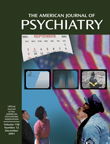ECT for Psychotic Depression Associated With a Brain Tumor
Ms. A was a 35-year-old woman whose medical history was notable for a left-frontal neurocytoma, two subsequent incomplete resections, and radiation treatment. The neurocytoma was detected during a routine workup for the acute onset of depression. Neurocytomas are a rare, slow-growing type of brain tumor with a high rate of recurrence. Ms. A’s subsequent psychiatric illness course was characterized by recurrent hospitalizations for persistent dysphoria, apathy, and hopelessness, including six hospitalizations within 18 months. Trials with more than 10 tricyclic antidepressants, selective serotonin reuptake inhibitors (SSRIs), and non-SSRIs produced no definite improvement, while methylphenidate and lorazepam produced transient improvement in her behavior.Ms. A had been transferred from another hospital, in which she had been hospitalized for 6 weeks after admission for depression and multiple suicide attempts by drowning. After admission to our neuropsychiatry unit, Ms. A remained reclusive, was frequently tearful, stared aimlessly for long periods, and was absent of, or had greatly delayed, verbal and motoric responses. She experienced somatic and religious delusions and expressed a wish to die. The results of a neurological examination revealed mild right-sided weakness and mild transcortical motor aphasia. ECT was considered because of the lack of adequate antidepressant response and increasing suicidality. An ECT workup, including magnetic resonance imaging of Ms. A’s brain, revealed a large, complex mass in the left lateral ventricle and left frontal encephalomalacia. A thallium brain scan revealed left frontal hypovascularity but no evidence of tumor recurrence; an EEG showed left hemispheric slowing but no epileptiform activity.Within 6 hours after right unilateral ECT, Ms. A appeared bright, had improved speech and motoric response, and recalled feeling “bad” and wanting to hurt herself before treatment. Two additional ECT treatments produced full resolution of her dysphoria, hypomotoric state, and delusions. After discharge and withdrawal of antidepressants, Ms. A’s mood remained stable over the next 8 months to the point that she pursued a job and driving privileges.
References
Information & Authors
Information
Published In
History
Authors
Metrics & Citations
Metrics
Citations
Export Citations
If you have the appropriate software installed, you can download article citation data to the citation manager of your choice. Simply select your manager software from the list below and click Download.
For more information or tips please see 'Downloading to a citation manager' in the Help menu.
View Options
View options
PDF/EPUB
View PDF/EPUBGet Access
Login options
Already a subscriber? Access your subscription through your login credentials or your institution for full access to this article.
Personal login Institutional Login Open Athens loginNot a subscriber?
PsychiatryOnline subscription options offer access to the DSM-5-TR® library, books, journals, CME, and patient resources. This all-in-one virtual library provides psychiatrists and mental health professionals with key resources for diagnosis, treatment, research, and professional development.
Need more help? PsychiatryOnline Customer Service may be reached by emailing [email protected] or by calling 800-368-5777 (in the U.S.) or 703-907-7322 (outside the U.S.).

